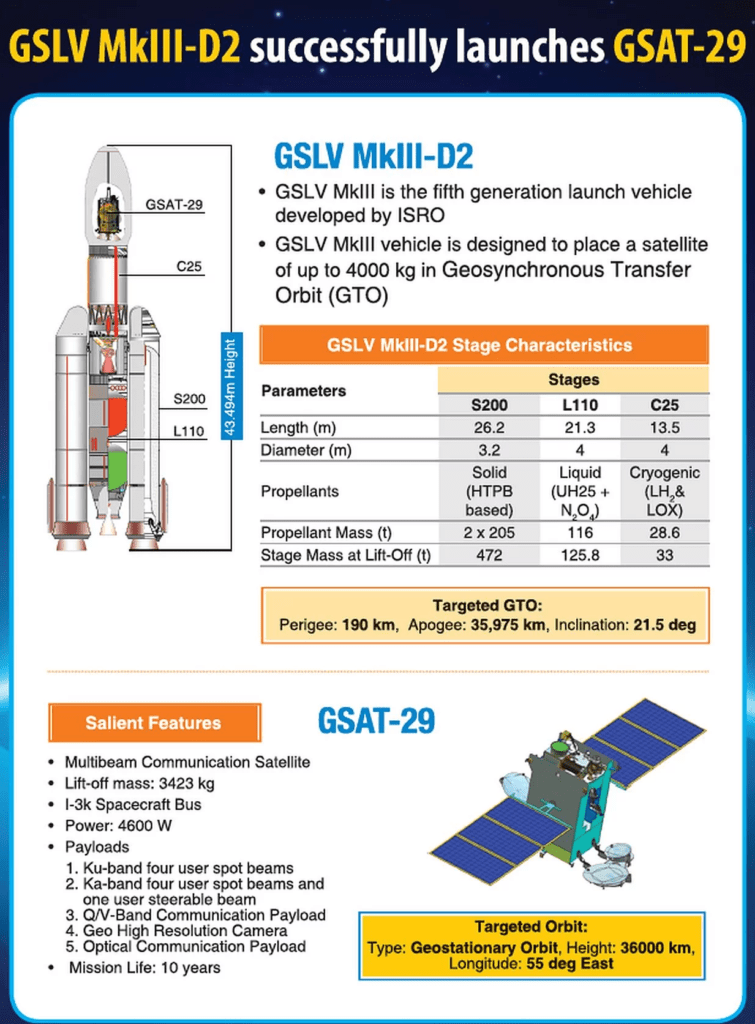- Indian Space Research Organisation (ISRO) on November 14, 2018 launched GSAT-29 communication satellite, from the second developmental flight of Geosynchronous Satellite Launch Vehicle MarkIII (GSLV MkIII-D2) from the Satish Dhawan Space Centre (SDSC) SHAR, Sriharikota.
- GSLV MkIII-D2 lifted off from the Second Launch Pad of SDSC SHAR , carrying the 3423-kg GSAT-29 satellite. About 17 minutes later, the vehicle injected the satellite into the Geosynchronous Transfer Orbit (GTO) as planned.
- GSLV Mk III is a three-stage heavy lift launch vehicle developed by the Indian Space Research Organisation (ISRO).
- Two massive boosters with solid propellant constitute the first stage, the core with liquid propellant form the second stage and the cryogenic engine completes the final stage.
- GSAT-29 is a multiband, multi-beam communication satellite, intended to serve as test bed for several new and critical technologies.
- Its Ku-band and Ka-band payloads are configured to cater to the communication requirements of users including those from remote areas especially from Jammu & Kashmir and North-Eastern regions of India.
- In addition, the Q/V-Band communication payload onboard is intended to demonstrate the future high throughput satellite system technologies.
- Geo High Resolution Camera will carry out high resolution imaging. Optical Communication Payload will demonstrate data transmission at a very high rate through optical communication link.
- As per the ISRO Chairman Dr K Sivan, through this launch, India has achieved significant milestone with the heaviest launcher lifting off the heaviest satellite from the Indian soil.
- Declaring GSLV MKIII operational, Dr Sivan announced that Chandrayaan-2 and Gaganyaan missions will be launched by this heavy-lifter.
- Jayakumar B, was the Mission Director of GSLV Mark III.
- The success of GSLV MkIII-D2 marks an important milestone in Indian space programme towards achieving self-reliance in launching heavier satellites. The success of this flight also signifies the completion of the experimental phase of GSLV Mark III.
- The first successful mission of GSLV Mark III was an experimental suborbital flight in 2014. Subsequently, GSLV Mark III-D1 launched GSAT-19, a high throughput communication satellite, with a lift-off mass of 3150 kg, into GTO on June 5, 2017.


